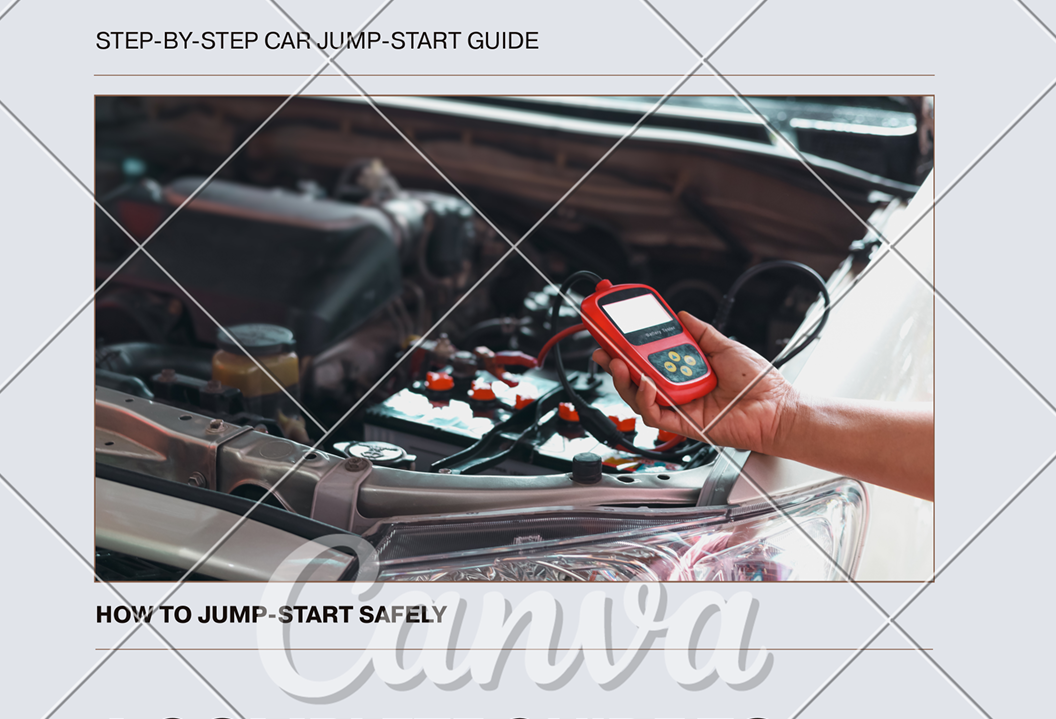
🚗 How to Jump‑Start a Car: A Step-by‑Step Guide
1. Stay Safe First
- Remove any metal jewelry—rings or bracelets can conduct electricity
- Wear goggles if available—lead‑acid batteries can emit harmful gas or even splash acid
- Work in a well‑ventilated area away from sparks or flames.
2. Prep the Vehicles
- Park both cars close (within 2 feet),
- Turn off ignition and all electronics in both cars.
- Set parking brakes and place transmissions in Park (auto) or Neutral (manual).
3. Locate Battery Terminals
- Open hoods and find the positive (+) terminal (often red) and negative (–) terminal (usually black)
- Some modern cars may hide the battery under covers—check your owner’s manual
4. Connect the Jumper Cables
- Red to dead battery’s + terminal
- Red to donor battery’s + terminal
- Black to donor battery’s – terminal
- Black to an unpainted metal part (ground) on the dead car
- Reddit users often stress this safety tip: “BLACK to METAL: Connect the other black clip to a metal ground location on the dead car’s frame.”
5. Start the Engines
- Start the good car first, let it idle for 2–5 minutes to build charge
- Then start the dead car. If it doesn’t start immediately, wait a few more minutes to charge the battery further
6. Disconnect the Cables (in reverse order)
- Remove black clamp from dead car’s grounded metal.
- Remove black clamp from donor battery.
- Remove red clamp from donor battery.
- Finally, remove red clamp from dead battery
7. Let the Car Recharge
- Keep the revived car running for at least 20–30 minutes or drive around to allow the alternator to recharge the battery
- If it needs another jump soon after, the battery may be failing—consider a replacement.
💡 Expert Tips & Safety Notes
- Never connect the black clamp to the dead battery’s negative terminal—grounding to the chassis reduces spark risks near the battery’s hydrogen gas
- Turn off both cars during hookup—running electronics on the donor vehicle can overload modern car circuits and damage sensitive electronics
- Monitor battery health—most batteries last 3–5 years; test or replace if it won’t hold a charge

🔧 Trouble Starting?
- Check cable connections and ensure they’re clean and corrosion
- Wait longer with donor engine idling to transfer more charge
- If the car still won’t start, it might need a mechanic—issues could be with the battery, starter, or alternator.
Alternatives to Traditional Jump‑Starts
- Portable jump starters (jump boxes) are convenient and safe—they’re lithium or lead‑acid packs that eliminate another vehicle
- Starting fluid can help cranking if the engine turns but won’t fire—spray into the air filter, then crank
Final Thoughts
Jump‑starting a vehicle is straightforward when done correctly: ensure you follow the exact cable‑connection order, keep all electronics off, wait patiently, and ground properly. With those precautions, you’re much less likely to experience sparks or damage.
